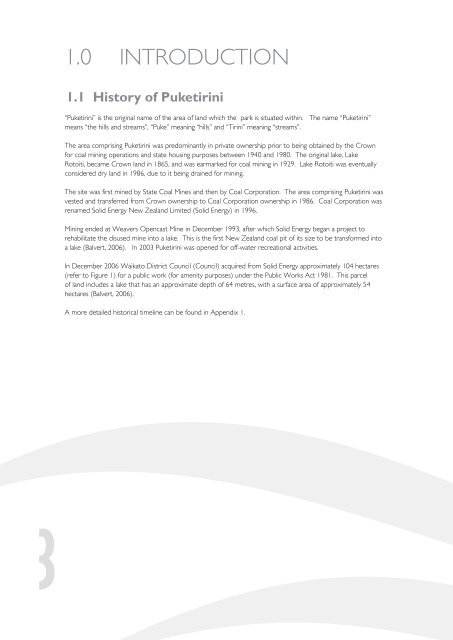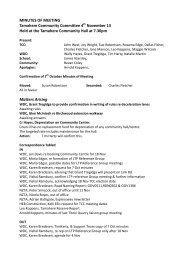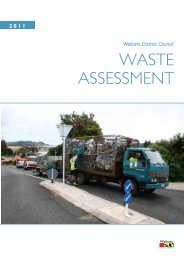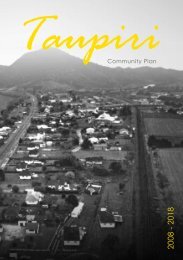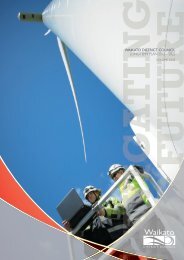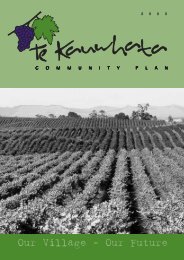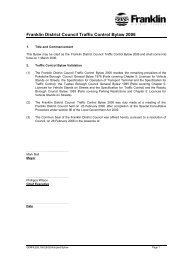Puketirini management plan - Waikato District Council
Puketirini management plan - Waikato District Council
Puketirini management plan - Waikato District Council
- No tags were found...
Create successful ePaper yourself
Turn your PDF publications into a flip-book with our unique Google optimized e-Paper software.
1.0 INTRODUCTION1.1 History of <strong>Puketirini</strong>“<strong>Puketirini</strong>” is the original name of the area of land which the park is situated within. The name “<strong>Puketirini</strong>”means “the hills and streams”, “Puke” meaning “hills” and “Tirini” meaning “streams”.The area comprising <strong>Puketirini</strong> was predominantly in private ownership prior to being obtained by the Crownfor coal mining operations and state housing purposes between 1940 and 1980. The original lake, LakeRotoiti, became Crown land in 1865, and was earmarked for coal mining in 1929. Lake Rotoiti was eventuallyconsidered dry land in 1986, due to it being drained for mining.The site was first mined by State Coal Mines and then by Coal Corporation. The area comprising <strong>Puketirini</strong> wasvested and transferred from Crown ownership to Coal Corporation ownership in 1986. Coal Corporation wasrenamed Solid Energy New Zealand Limited (Solid Energy) in 1996.Mining ended at Weavers Opencast Mine in December 1993, after which Solid Energy began a project torehabilitate the disused mine into a lake. This is the first New Zealand coal pit of its size to be transformed intoa lake (Balvert, 2006). In 2003 <strong>Puketirini</strong> was opened for off-water recreational activities.In December 2006 <strong>Waikato</strong> <strong>District</strong> <strong>Council</strong> (<strong>Council</strong>) acquired from Solid Energy approximately 104 hectares(refer to Figure 1) for a public work (for amenity purposes) under the Public Works Act 1981. This parcelof land includes a lake that has an approximate depth of 64 metres, with a surface area of approximately 54hectares (Balvert, 2006).A more detailed historical timeline can be found in Appendix 1.


